Georg Wimmer
Advanced Image Quality Assessment for Hand- and Fingervein Biometrics
Feb 21, 2023



Abstract:Natural Scene Statistics commonly used in non-reference image quality measures and a deep learning based quality assessment approach are proposed as biometric quality indicators for vasculature images. While NIQE and BRISQUE if trained on common images with usual distortions do not work well for assessing vasculature pattern samples' quality, their variants being trained on high and low quality vasculature sample data behave as expected from a biometric quality estimator in most cases (deviations from the overall trend occur for certain datasets or feature extraction methods). The proposed deep learning based quality metric is capable of assigning the correct quality class to the vaculature pattern samples in most cases, independent of finger or hand vein patterns being assessed. The experiments were conducted on a total of 13 publicly available finger and hand vein datasets and involve three distinct template representations (two of them especially designed for vascular biometrics). The proposed (trained) quality measures are compared to a several classical quality metrics, with their achieved results underlining their promising behaviour.
Extensive Threat Analysis of Vein Attack Databases and Attack Detection by Fusion of Comparison Scores
Mar 16, 2022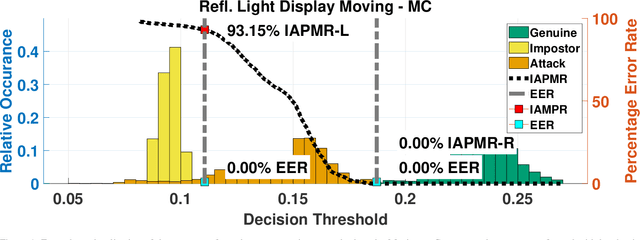
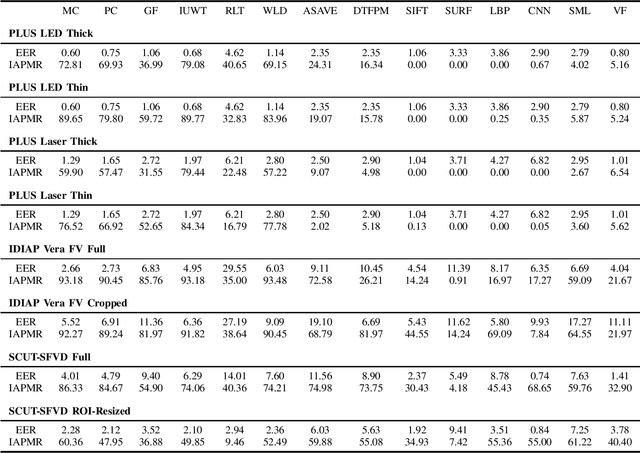
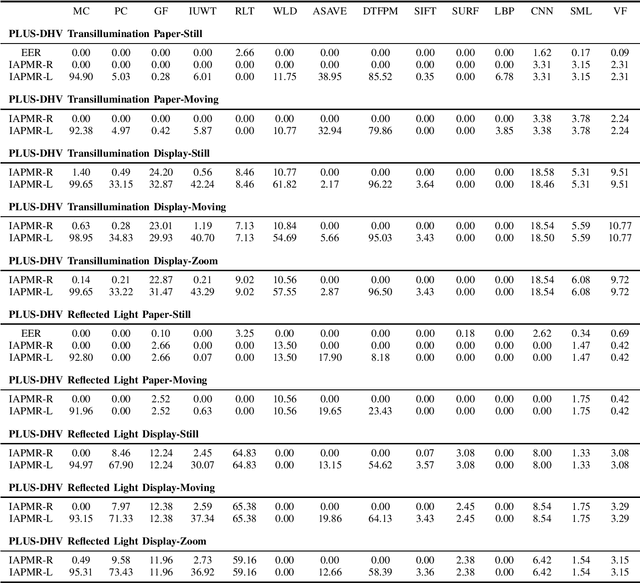
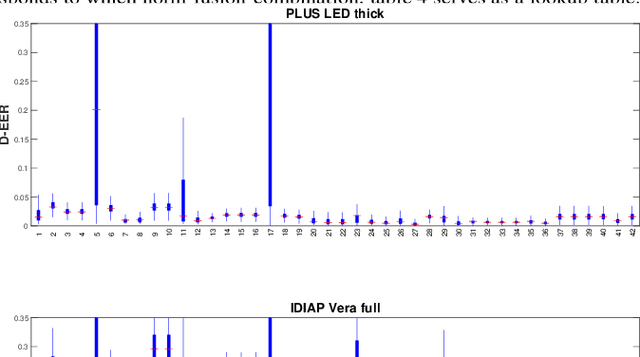
Abstract:The last decade has brought forward many great contributions regarding presentation attack detection for the domain of finger and hand vein biometrics. Among those contributions, one is able to find a variety of different attack databases that are either private or made publicly available to the research community. However, it is not always shown whether the used attack samples hold the capability to actually deceive a realistic vein recognition system. Inspired by previous works, this study provides a systematic threat evaluation including three publicly available finger vein attack databases and one private dorsal hand vein database. To do so, 14 distinct vein recognition schemes are confronted with attack samples and the percentage of wrongly accepted attack samples is then reported as the Impostor Attack Presentation Match Rate. As a second step, comparison scores from different recognition schemes are combined using score level fusion with the goal of performing presentation attack detection.
Two-stage CNN-based wood log recognition
Jan 12, 2021



Abstract:The proof of origin of logs is becoming increasingly important. In the context of Industry 4.0 and to combat illegal logging there is an increasing motivation to track each individual log. Our previous works in this field focused on log tracking using digital log end images based on methods inspired by fingerprint and iris-recognition. This work presents a convolutional neural network (CNN) based approach which comprises a CNN-based segmentation of the log end combined with a final CNN-based recognition of the segmented log end using the triplet loss function for CNN training. Results show that the proposed two-stage CNN-based approach outperforms traditional approaches.
Improving Endoscopic Decision Support Systems by Translating Between Imaging Modalities
Apr 27, 2020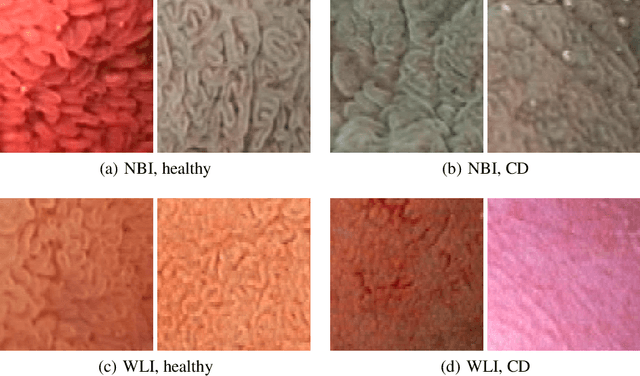
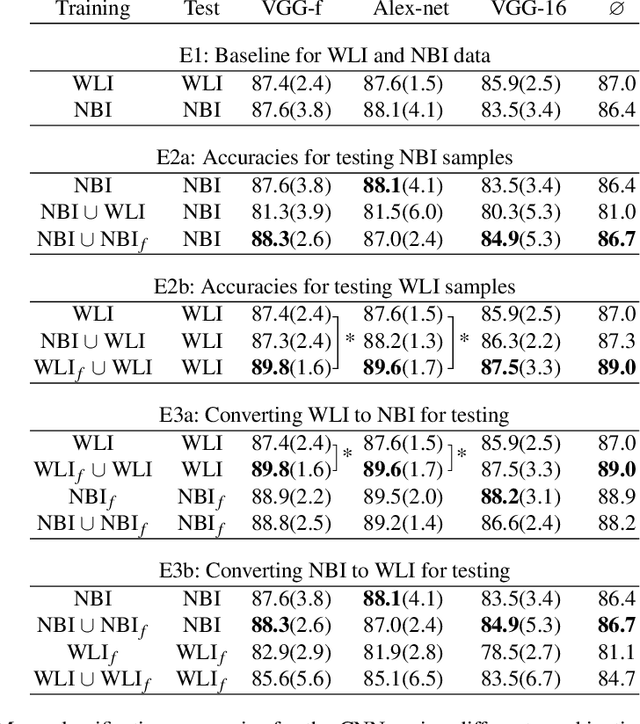
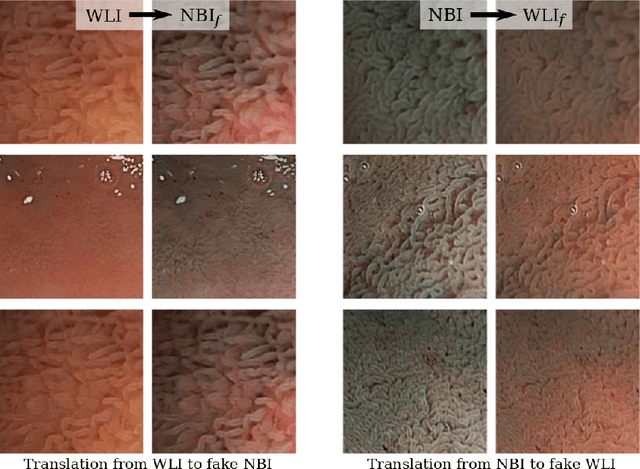
Abstract:Novel imaging technologies raise many questions concerning the adaptation of computer-aided decision support systems. Classification models either need to be adapted or even newly trained from scratch to exploit the full potential of enhanced techniques. Both options typically require the acquisition of new labeled training data. In this work we investigate the applicability of image-to-image translation to endoscopic images showing different imaging modalities, namely conventional white-light and narrow-band imaging. In a study on computer-aided celiac disease diagnosis, we explore whether image-to-image translation is capable of effectively performing the translation between the domains. We investigate if models can be trained on virtual (or a mixture of virtual and real) samples to improve overall accuracy in a setting with limited labeled training data. Finally, we also ask whether a translation of testing images to another domain is capable of improving accuracy by exploiting the enhanced imaging characteristics.
 Add to Chrome
Add to Chrome Add to Firefox
Add to Firefox Add to Edge
Add to Edge